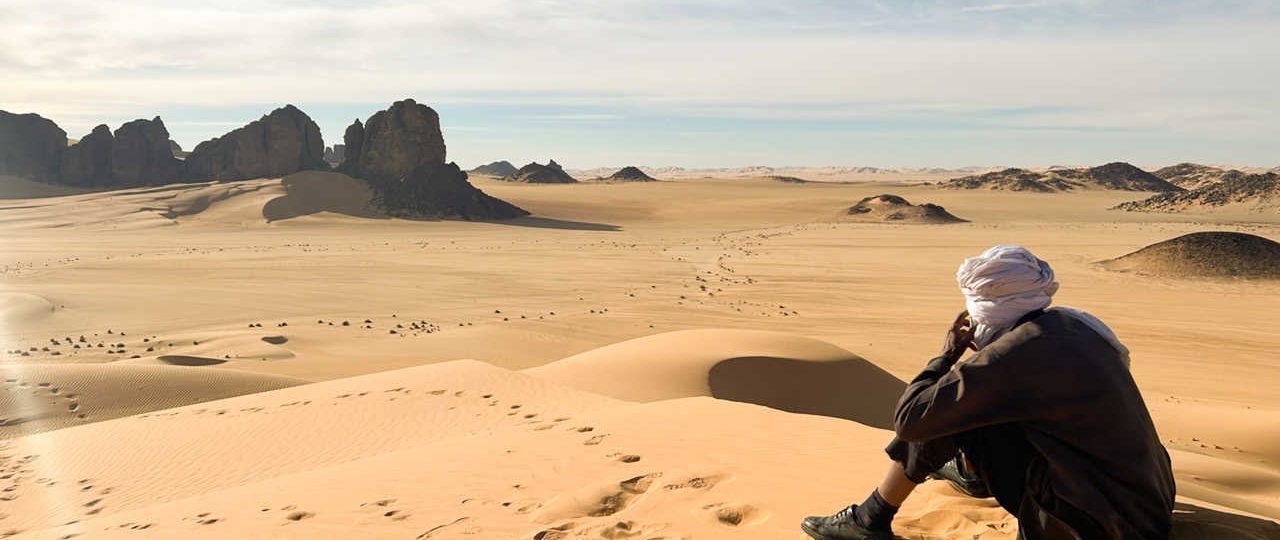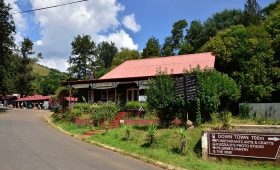Tassili n’Ajjer: Discover Algeria’s Unique Landscape
Exploring the Natural Wonders
Tassili n’Ajjer, a vast plateau in southeastern Algeria, offers a landscape unlike any other. Spanning 72,000 square kilometers, it borders Libya and Niger and is renowned for its striking geological formations. The area is primarily composed of sandstone, which has been sculpted by erosion into nearly 300 natural rock arches, deep gorges, and permanent water pools. The vibrant colors of the rock formations, ranging from near-black to dull red, are due to a thin layer of metallic oxides.
One of the most captivating areas is the “Tadrart Rouge,” known for its stunning red hues at sunrise and sunset. The “Arch of Oued Djerat” is another highlight, offering a breathtaking natural rock arch that showcases the power of erosion.
Ancient Art and Archaeology
Tassili n’Ajjer is not just a geological wonder; it’s also a treasure trove of ancient art. The region is home to thousands of rock paintings and carvings, some dating back to the Neolithic period. These artworks provide a glimpse into the lives of the transhumant pastoralist groups who once inhabited the area. The rock art depicts various scenes, including animals like the Barbary sheep, which still roam the region today.
Archaeological evidence suggests that the highlands were occupied between 5500 and 1500 BCE, with artifacts such as ceramic pots, lithic arrowheads, and jewelry found in rock shelters. These findings highlight the area’s historical significance and the adaptive strategies of its ancient inhabitants.
Immersing in Local Culture
The indigenous Tuareg people, known for their rich traditions and hospitality, have long inhabited the Tassili n’Ajjer region. Engaging with the Tuareg offers a unique cultural experience. You can savor traditional dishes like “Matlouh” bread and participate in music and dance performances that reflect their vibrant heritage.
Best Time to Visit
For a comfortable experience, plan your visit between October and April. During these months, the temperatures are more manageable, making it ideal for exploring the outdoors. The summer months can be extremely hot, with temperatures soaring above 40°C (104°F), so it’s best to avoid visiting during this time unless you’re well-prepared for the heat.
Getting There
Reaching Tassili n’Ajjer requires some planning due to its remote location. The nearest major airport is in Tamanrasset, which connects to Algiers via domestic flights. From Tamanrasset, you can hire a local guide or join a guided tour to reach the plateau. The journey involves off-road driving through the desert, adding an adventurous element to your trip.
Local Transportation
Once in Tassili n’Ajjer, transportation is primarily on foot or camelback. The rugged terrain makes vehicle travel challenging, so be prepared for long hikes and camel rides. Hiring a local guide is advisable, as they are familiar with the area and can ensure your safety during the trek.
Ecological and Wildlife Insights
The plateau’s higher elevation and water-retentive sandstone create a surprisingly lush environment compared to the surrounding desert. This unique ecosystem supports a variety of plant and animal species, including the endangered Saharan cypress and myrtle. Bird enthusiasts will find Tassili n’Ajjer particularly appealing, as it is designated an Important Bird Area, home to species like the Pharaoh eagle-owl and desert sparrow.



